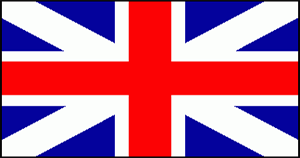War of 1812 Battles |
Colonial Wars |
American Wars |
Burning of Wasington, D.C.
August 25, 1814, Washington, D.C.
 |
The "Burning of Washington" is a name given the razing of Washington, D.C. by British forces during the War of 1812. Strict discipline and the British commander's orders to burn only public buildings are credited with preserving most residences, but the facilities of the U.S. government were utterly destroyed.
At the time, Washington was a minor port with only about 8,000 inhabitants — about 1,300 of whom were slaves. What it lacked in strategic value, however, it made up in symbolic value. The British and Canadians had long sought revenge on the United States for the destruction they had caused on the capital of Upper Canada at York after the Battle of York in 1813. The naval commander, George Cockburn, wrote that he hoped the destruction of the new republic's capital might demoralize the enemy as well.
On Wednesday, August 24, backed by reinforcements newly arrived from Europe, the British Gen. Robert Ross defeated the American forces at the Battle of Bladensburg, laying open the path to the capital.
During the American retreat, President James Madison sought out Secretary of War John Armstrong Jr. to see what the plan was for the defense of the capital. Armstrong reported that there was none; he had expected the British to turn next to Baltimore. The President, his cabinet and many other government officials fled to the mountains of Virginia. Most residents of Washington had already abandoned the city; preservation of the government's documents and records had been largely left to clerks and slaves.
On August 25, the advance guard of British troops marched to Capitol Hill; they were too few in number to occupy the city, so Ross intended to destroy as much of it as possible. He sent a party under a flag of truce to agree to terms, but they were attacked by partisans from a house at the corner of Maryland Avenue, Constitution Avenue, and 2nd Street NE. This was to be the only resistance the soldiers met. The house was burned, but the soldiers were infuriated, and the Union Jack was raised above Washington.
The buildings housing the Senate and House of Representatives—construction on the trademark central rotunda of the Capitol had not yet begun—were set ablaze not long after. The interiors of both buildings, including the Library of Congress, were destroyed, although the thick walls and a torrential rainfall preserved their exteriors. Cockburn also entered the building of the anti-British newsletter, "National Intelligencer," intending to burn it down; however, a group of neighborhood women persuaded him not to because they were afraid the fire would spread to their neighboring houses.
The troops then turned north down Pennsylvania Avenue toward the President's House. First Lady Dolley Madison remained there after many of the government officials—and her own bodyguard— had already left, gathering valuables, documents and other items of importance, notably a full-length painting of President George Washington by Gilbert Stuart. She was finally persuaded to leave moments before British soldiers entered the building. Once inside, the soldiers found the dining hall set for a dinner for 40 people. After eating all the food they set about destroying the building.
Cockburn now ordered all the contents of the building to be emptied into the streets and standing on a printing press, he announced he would destroy all the "C"s in the press so that "the rascals can have no further means of abusing my name." Fuel was added to the fires that night to ensure they would continue burning into the next day; the flames were reportedly visible as far away as Baltimore and the Patuxent River.
The British also burned the U.S. Treasury building and other public buildings. The historic Washington Navy Yard, founded by Thomas Jefferson and the first federal installation in the United States, was burned by the Americans to prevent capture of stores and ammunition. The U.S. Patent Office building was saved by the efforts of William Thornton—architect of the Capitol and then superintendent of patents—who convinced the British of the importance of its preservation.
During the occupation, a severe storm, which included a tornado passed through, damaging both the invaders and the city, but quickly leaving and helping put out the fires. The occupation of Washington lasted about 26 hours, and within a week the British troops were dispatched to their next target, Baltimore. Madison and the rest of the government returned to the city, but were in such disarray that they were unable to prosecute the war effectively.
The thick sandstone walls of the President's House survived, although scarred with smoke and scorch marks. Although a popular myth has it that the modern name White House came from the rebuilt mansion being painted white to cover smoke damage, the name is recorded earlier than the war, and it was first painted white in 1798, before it was used by any President. Reconstruction of the Capitol would not begin until 1815, and would not be complete until 1830.
Of the 3 objectives of Britain's invasion of the U.S., Lake Champlain, Baltimore and Washington, D.C. this was the only attack that was successful. Although they had succeeded in diverting the necessary attention of Washington away from the war, the field commanders proved themselves and beat back every invasion that the British launched against the U.S. for the rest of the war. Cockburn's belief that the destruction of the capital would demoralize the American populace also proved false. The destruction galvanized thousands to volunteer for the defense of Baltimore.
